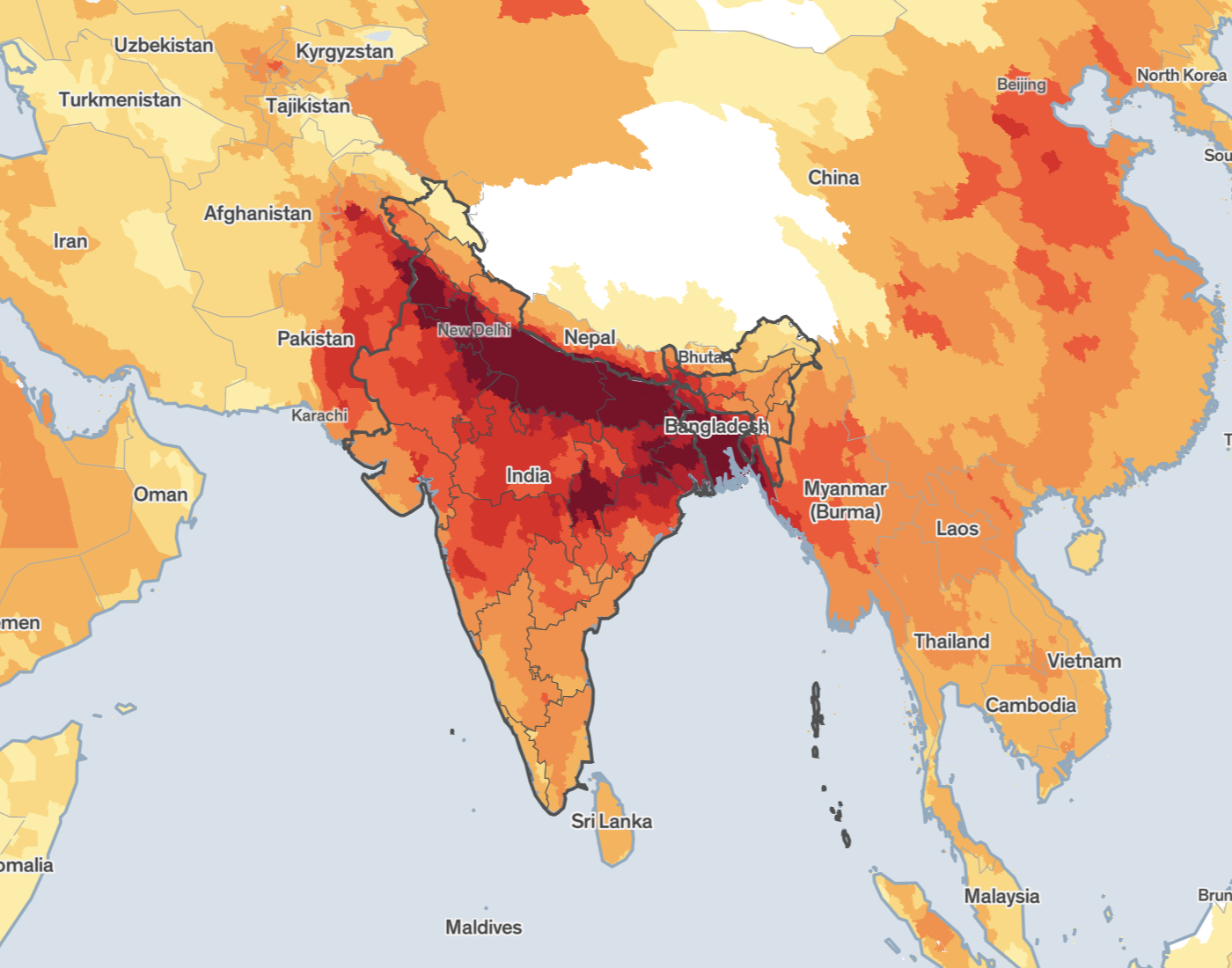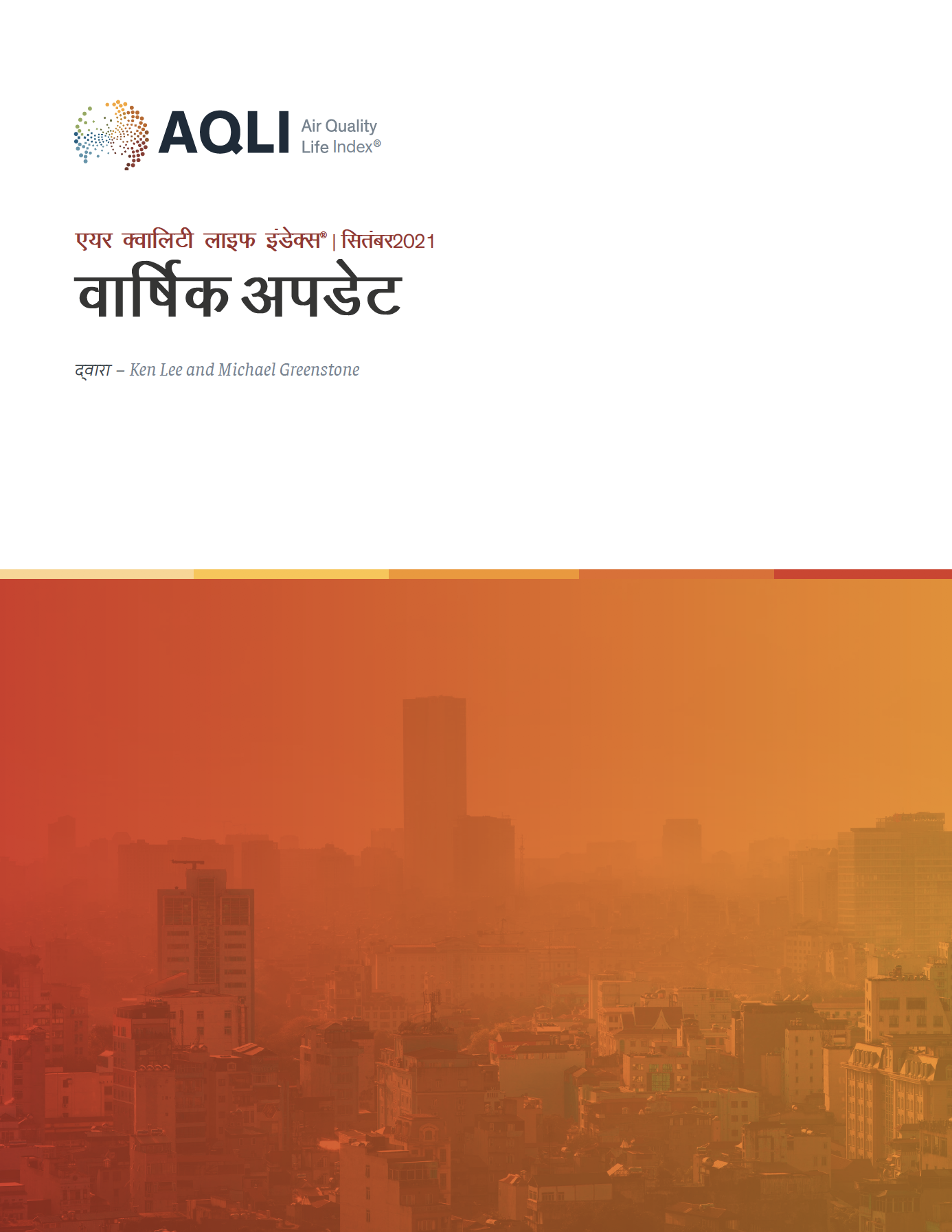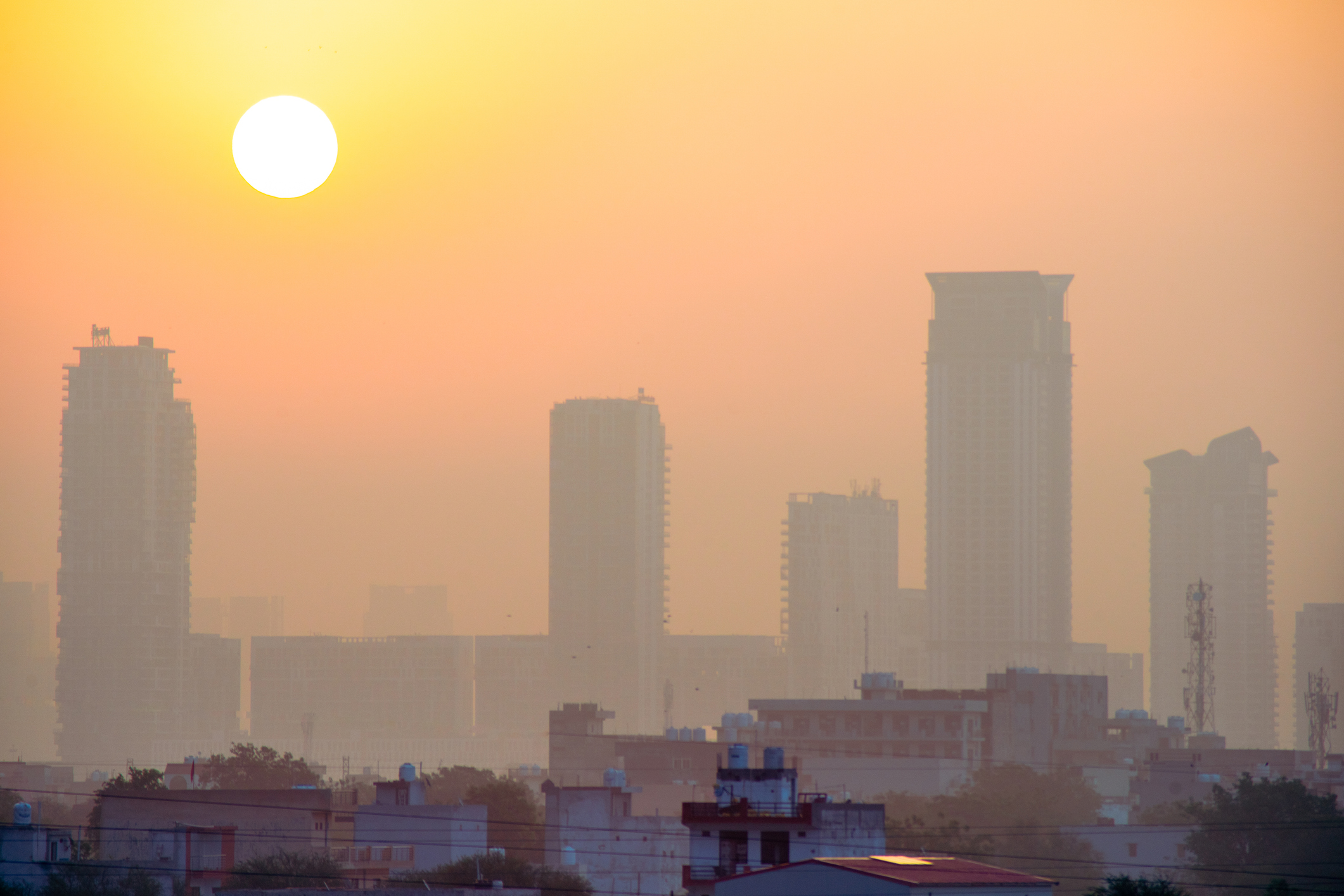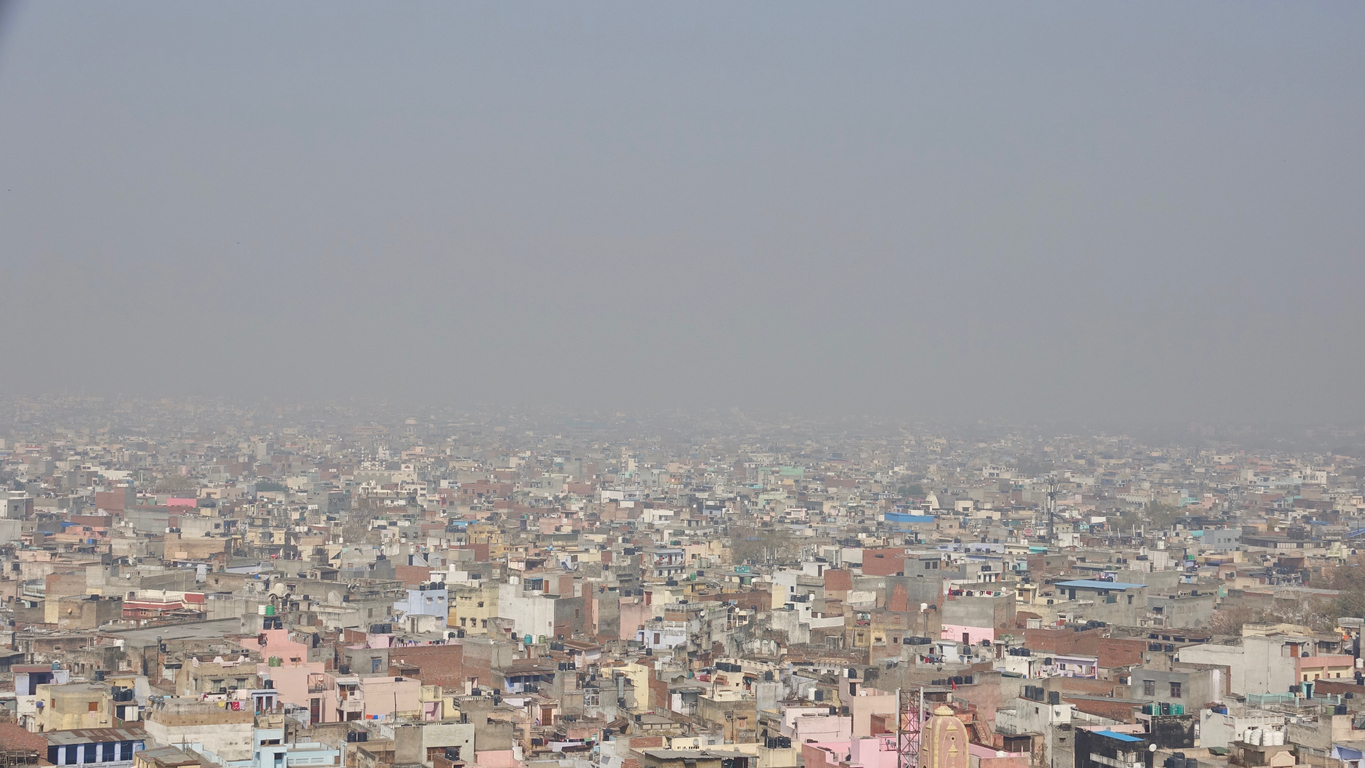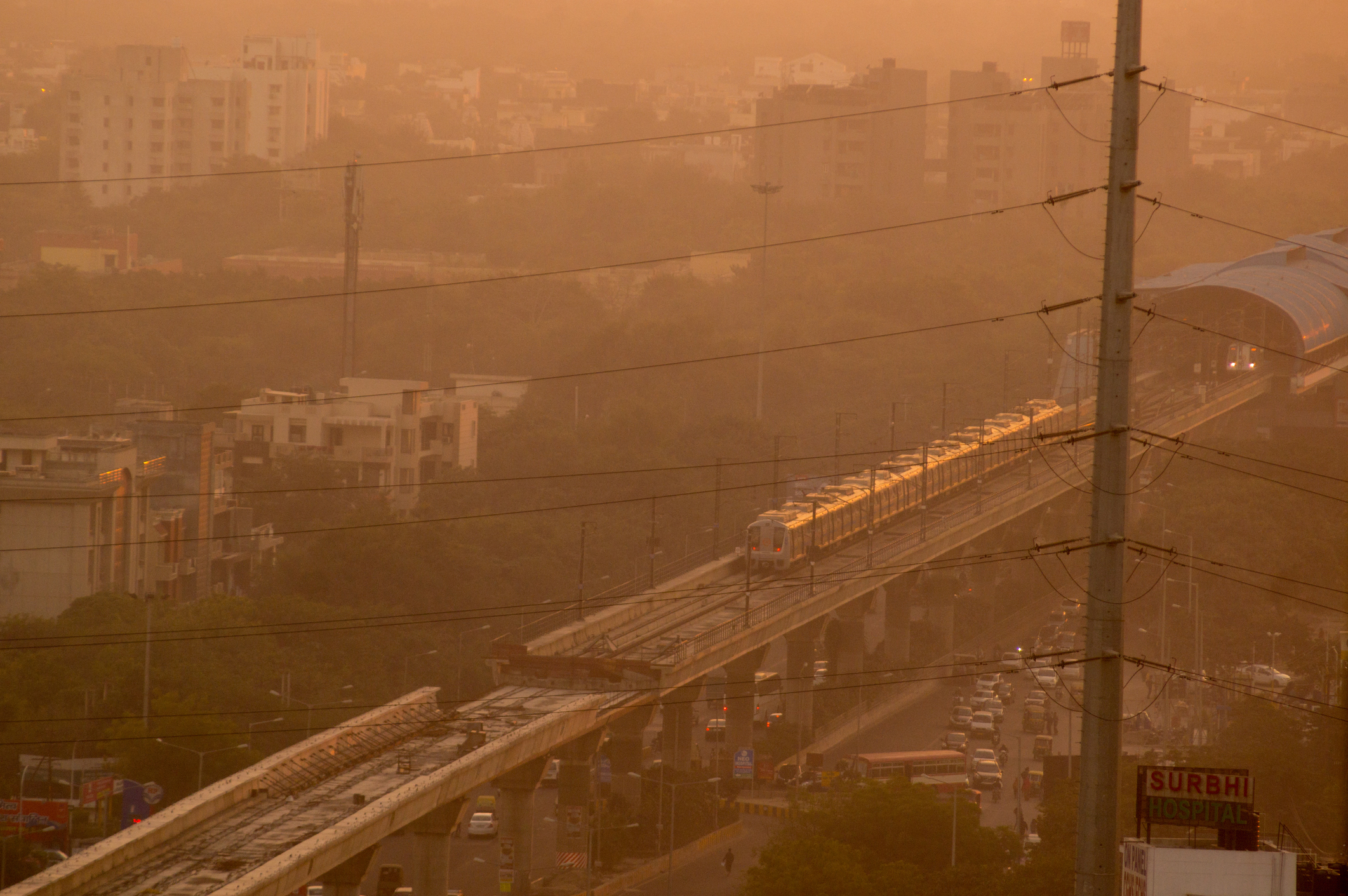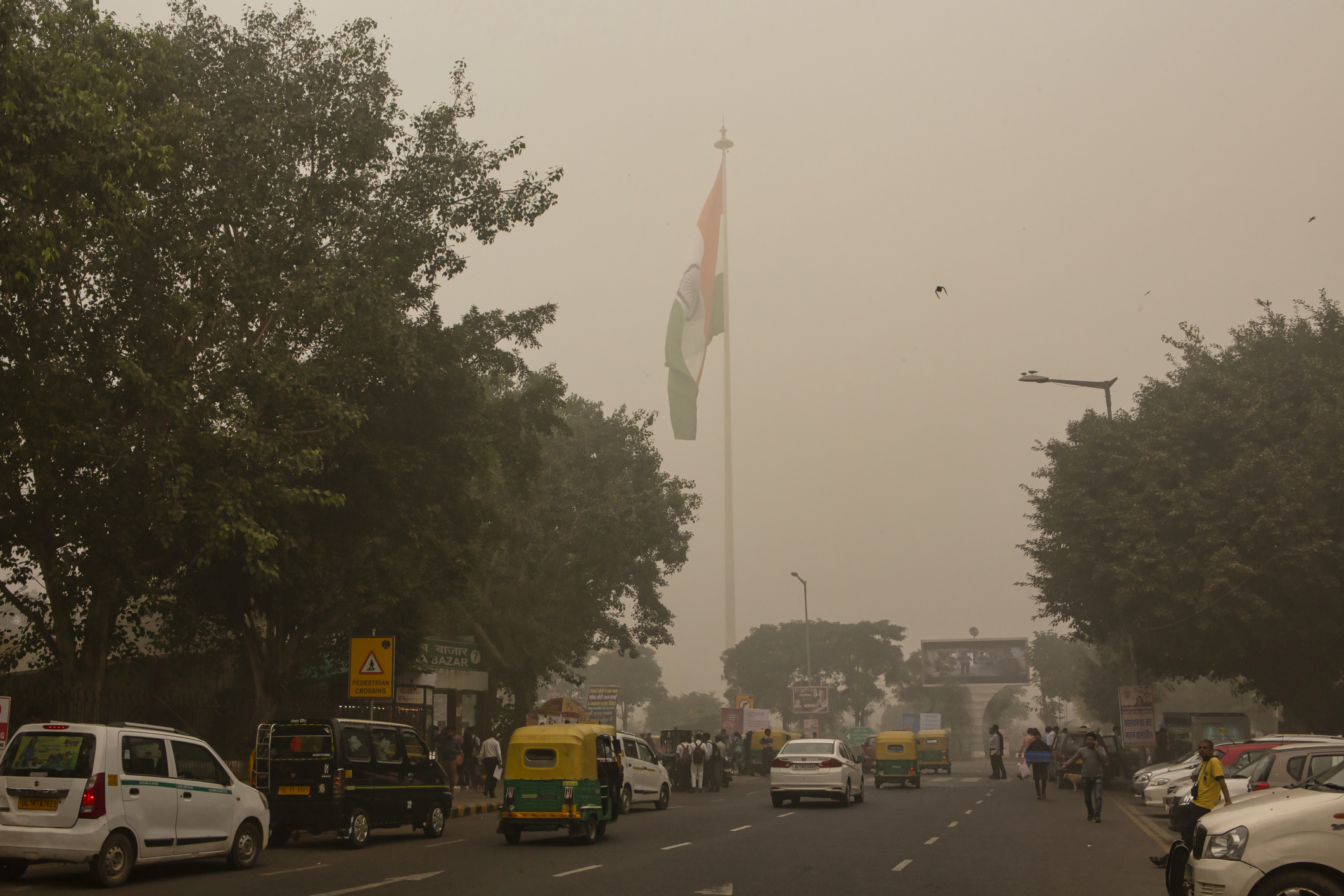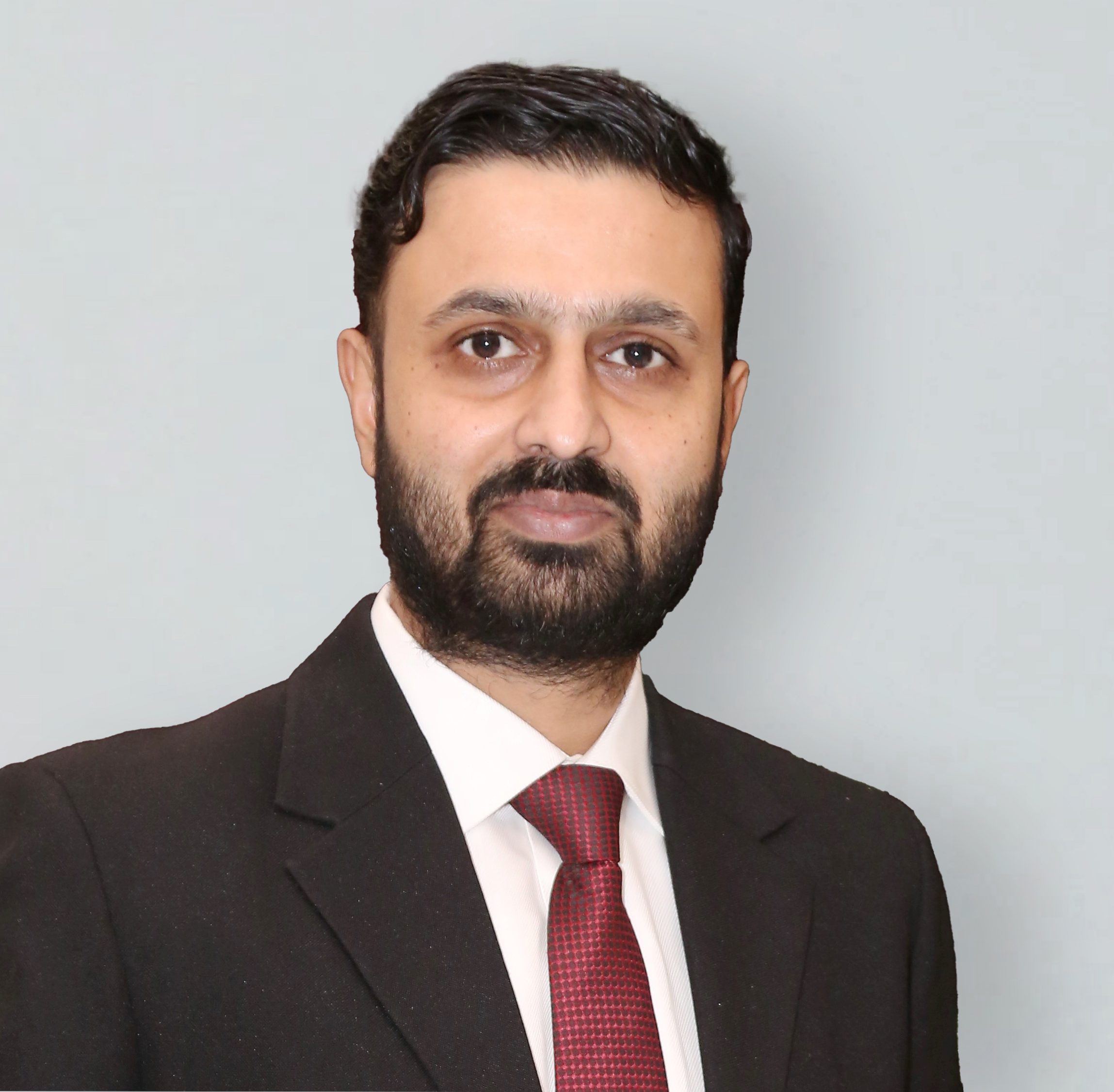Last Updated: August 28, 2023
India is the world’s second most polluted country. Fine particulate air pollution (PM2.5) shortens an average Indian’s life expectancy by 5.3 years, relative to what it would be if the World Health Organization (WHO) guideline of 5 µg/m3 was met.[1] Some areas of India fare much worse than average, with air pollution shortening lives by 11.9 years in the National Capital Territory of Delhi, the most polluted city in the world.
KEY TAKE-AWAYS
- All of India’s 1.3 billion people live in areas where the annual average particulate pollution level exceeds the WHO guideline; 67.4 percent of the population live in areas that exceed the country’s own national air quality standard of 40 µg/m3.
- Measured in terms of life expectancy, particulate pollution is the greatest threat to human health in India, taking 5.3 years off the life of the average Indian. In contrast, cardiovascular diseases reduce the average Indian’s life expectancy by about 4.5 years, while child and maternal malnutrition reduce life expectancy by 1.8 years.
- Particulate pollution has increased over time. From 1998 to 2021, average annual particulate pollution increased by 67.7 percent, further reducing average life expectancy by 2.3 years. From 2013 to 2021, 59.1 percent of the world’s increase in pollution has come from India.
- In the most polluted region of the country—the Northern Plains—521.2 million residents or 38.9 percent of India’s population are on track to lose 8 years of life expectancy on average relative to the WHO guideline and 4.5 years relative to the national standard if current pollution levels persist.[2]
- If India were to reduce particulate pollution to meet the WHO guideline, residents in Delhi—India’s capital and most populous city—would gain 11.9 years of life expectancy. In North 24 Parganas—the country’s second most populous district—residents would gain 5.6 years of life expectancy.
Policy Impacts
- In 2019, India declared a “war against pollution” and launched its National Clean Air Programme (NCAP), signaling its desire to reduce particulate pollution. NCAP originally aimed to reduce particulate pollution by 20-30 percent nationally relative to 2017 levels by 2024 and focused on 102 cities that were not meeting India’s national annual PM5 standard, termed “non-attainment cities.” In 2022, the Indian Government announced its revamped particulate pollution reduction target for NCAP, setting no national goal but increasing its ambition at the city level. The new goal aims for a 40 percent reduction relative to 2017 levels for an expanded number of 131 non-attainment cities by 2025-26.[3] If the ambition of the revised target is met, these cities’ overall annual average PM2.5 exposure would be 21.9 µg/m3 lower than 2017 levels. This would add 2.1 years onto the life of the average Indian living in these specific 131 cities and 7.9 months onto the life of the average Indian country-wide.
- The availability of reliable, timely and ready-to-use data on air pollution is one area where India can make significant improvements. Although air pollution data is available from Central and State pollution control board websites, it’s often not straightforward to access it and even if it is, it’s not in an analysis-ready format and might require significant amounts of pre-processing (e.g. in case of PDFs) before it’s ready for use. The inability to smoothly access fully open public government air quality data sets India apart from many other nations with similar or even much smaller air quality monitoring networks.[4] Making these datasets more accessible (with better APIs) and available on a more timely basis would allow Indian citizens with a variety of skill sets to participate in addressing one of India’s largest public health crises.
Footnotes
[1] This data is based on the AQLI 2021 dataset. All annual average PM5 values (measured in micrograms per cubic meter: µg/m³) are population weighted.
[2] We define the Northern Plains of India as the following seven states and union territories: Bihar, Chandigarh, Delhi, Haryana, Punjab, Uttar Pradesh, and West Bengal. In this analysis, Northern plains of India is synonymous with North India, Northern India, and the North Indian Belt.
[4] Open Air quality data, The global landscape 2022 community summary table: https://docs.google.com/spreadsheets/d/1m3KfNOGQNlBBGn-jSqPoRmKH-IU0ic1AY9UNClXQb3I/edit#gid=1038230352.









